F1 Vs IndyCar: The Differences Explained
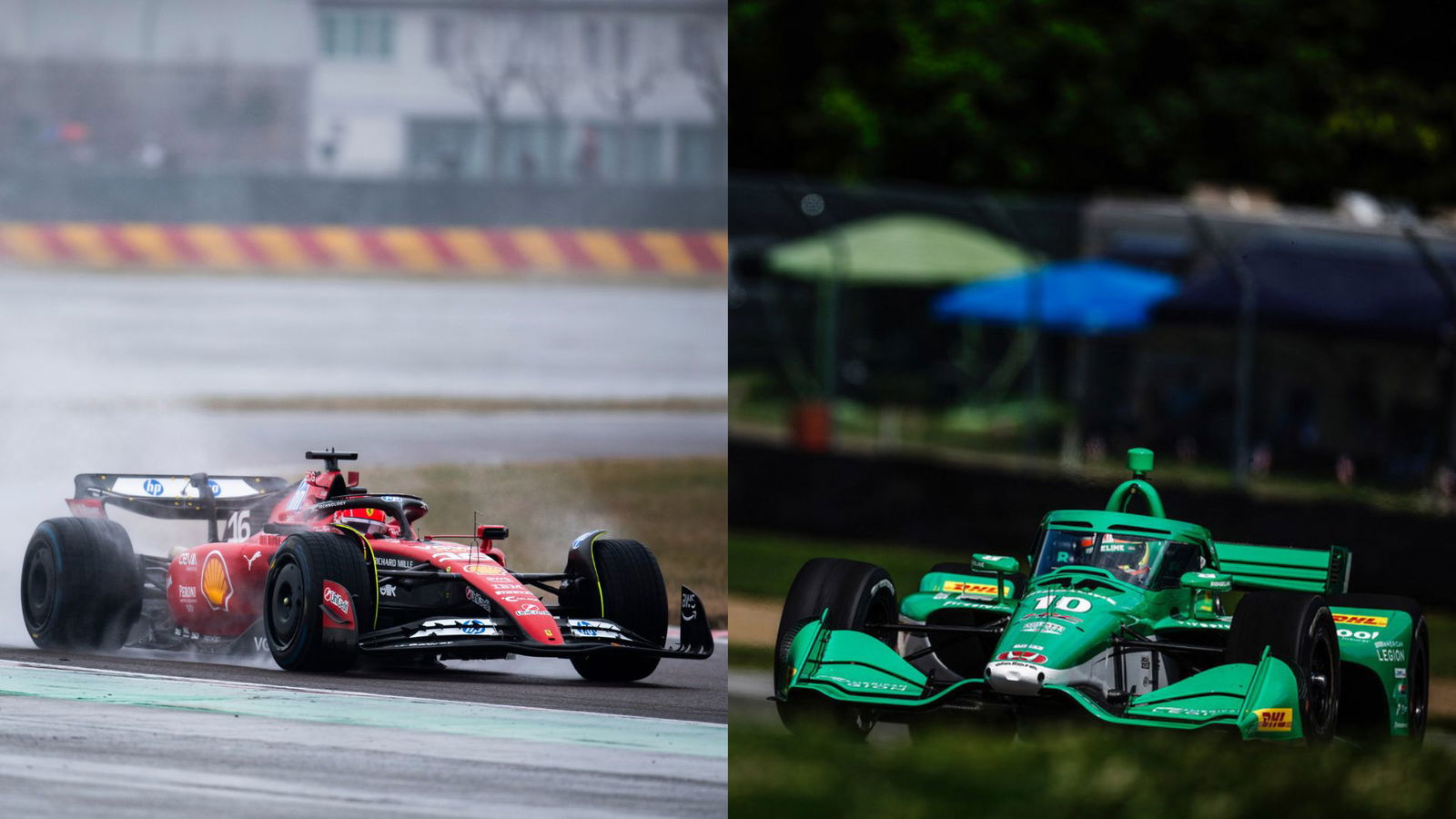
To the casual observer, Formula 1 and IndyCar can look pretty similar. Cars with a single seat and an open-wheel body drive incredibly quickly around a track – how different can they be? Very different, is the answer, from the two series’ history to their modern mechanical makeup and the tracks they race on.
In its current guise, the IndyCar Series has existed since 1996, initially as a rival to the CART series, from which it broke off due to an acrimonious ‘split’ – but that’s another story. Its origins, however, go all the way back to an American open-wheel championship first run in 1905.
In contrast, the Formula 1 World Championship started in 1950, using rules standardised in 1946. Its roots can be traced back to various Grand Prix championships of the 1920s and 1930s.
For a while, the two worlds met; from 1950 to 1960, the Indy 500 – now the highlight of the IndyCar season – was part of the F1 World Driver’s Championship, which meant many of the top American drivers of the day appear in the annals of F1 history, even though most didn’t race in other Grands Prix.
Formula 1
The Formula 1 World Championship has been running uninterrupted since 1950.
For the 2025 season, 20 drivers from 10 teams line up for 24 scheduled races at tracks around the world. Most F1 tracks are purpose-built road courses, although there are also a growing number of street tracks thrown in to spice things up.

The number of races per season has been creeping up in recent years; 2024 saw a record 24 races, and the same number are scheduled for 2025.
The sport has grown in popularity in the USA in recent years, in part thanks to the success of the Netflix behind-the-scenes show Drive to Survive, and new races have been introduced in Miami and Las Vegas to attract more fans. There are now five races across North America.
Formula 1 rules generally have a big overhaul every few years to keep technology up-to-date and relevant. Since 2014 all F1 cars have used 1.6-litre V6 turbo units attached to a hybrid electrical system. Combined, the powertrain makes around 1000bhp. But in 2022 the latest big rule change focused on a radical revision of aerodynamics to promote closer racing and more overtaking.
F1 cars have very advanced and complex aero features on and below the car. This allows them to develop huge amounts of downforce and corner at tremendous speeds., but it can also create a lot of aerodynamic wash, or dirty air, behind them. In recent years, this has made it difficult for F1 cars to follow one another closely at high speed, often leading to criticism from fans.
In 2021, cars lost around 35 per cent of their downforce when within three car lengths of the car in front. The 2022 plans aimed to reduce this to well under 10 per cent, and demanded that teams reduce the complexity of the car’s aero. Rather than complex aero elements on top of the car, they were to focus more on ‘ground effect’, using tunnels under the car’s floor to create areas of low pressure and pulling the car down to create massive high-speed grip – a concept made popular during the '70s and '80s in F1.

Overhauled and simplified front and rear wings were mandated to avoid sending the airflow outwards from the car, but to narrow it instead. Wheel and tyre size has also dramatically increased from 13 to 18 inches, to more closely reflect road car tech.
F1’s Drag Reduction System (DRS), first introduced in 2011, has been retained. When a driver is within one second of the car in front, they can press a button that opens a slot in the rear wing, allowing it to travel faster in a straight line and making it easier to overtake.
The hope was that the 2022 rules would allow less reliance on DRS, but while the changes have made it possible for cars to follow each other more closely, the impact hasn’t been as dramatic as fans had hoped for, so DRS is still a key element in on-track overtakes.
The F1 engines run on E10 fuel, which uses 10 per cent ethanol. New engine regulations arrive in 2026 and will require 100 per cent sustainable fuel in an effort to reduce the sport’s environmental impact.

The cars’ hybrid systems recover energy in two main ways, using two key elements – the MGU-K, and the MGU-H. The ‘K’ part stands for ‘kinetic’ and recovers energy that would otherwise be lost through braking, while the MGU-H (heat) draws thermal energy from the exhaust system. Along with the energy store (ES) and control electronics (CE), these make up the Energy Recovery System (ERS); add in the internal combustion engine (ICE) and the turbocharger (TC) and you have a complete F1 power unit. Theoretically, they’re allowed to rev as high as 15,000rpm, but restrictions on fuel flow, reliability concessions, and the general power curve of the unit mean that drivers usually change gear below 12k.
Each car may use a maximum of two energy stores or control electronics per season, and three each of the ICE, TC, MGU-K, or MGU-H elements. Any more than this and drivers will have to take grid penalties.
At the moment the 10 F1 teams are supplied by four different power unit manufacturers. Mercedes supplies its own factory team, Aston Martin, McLaren and Williams; Ferrari supplies its own team as well as Haas and Sauber; Renault solely supplies its own Alpine team and the two teams under Red Bull’s corporate umbrella are powered by Red Bull Powertrains, essentially a rebrand of Honda’s engines after the Japanese manufacturer pulled out of the sport after 2021.

The gearbox comprises eight forward gears (with a fixed ratio across the whole season) and a mandatory reverse. They are of course semi-automatic and seamless shift, and must last for six consecutive events – if any are changed before that then yup, you’ve guessed it, grid penalty.
In an effort to level the playing field and prevent money from being the key factor in on-track success, F1 uses a cost cap system, which in 2025 is set at $140.4 million, although certain things such as driver salaries and marketing aren’t subject to the restrictions. There are also other development restrictions – the higher a team finishes in the championship, the less time they’re allowed to spend testing aerodynamics in the wind tunnel or through CFD simulations. This is all part of efforts to narrow the gap in performance between teams.
The total weight of the cars is mandated to be a minimum of 798kg (including the driver but not including fuel), a hefty increase from the 605kg cars of little more than a decade ago. Part of this is down to the increased mass of the larger new wheels, hybrid systems, but also improvements in safety, such as the Halo device, which extends over the cockpit and protects the driver’s head in a crash.
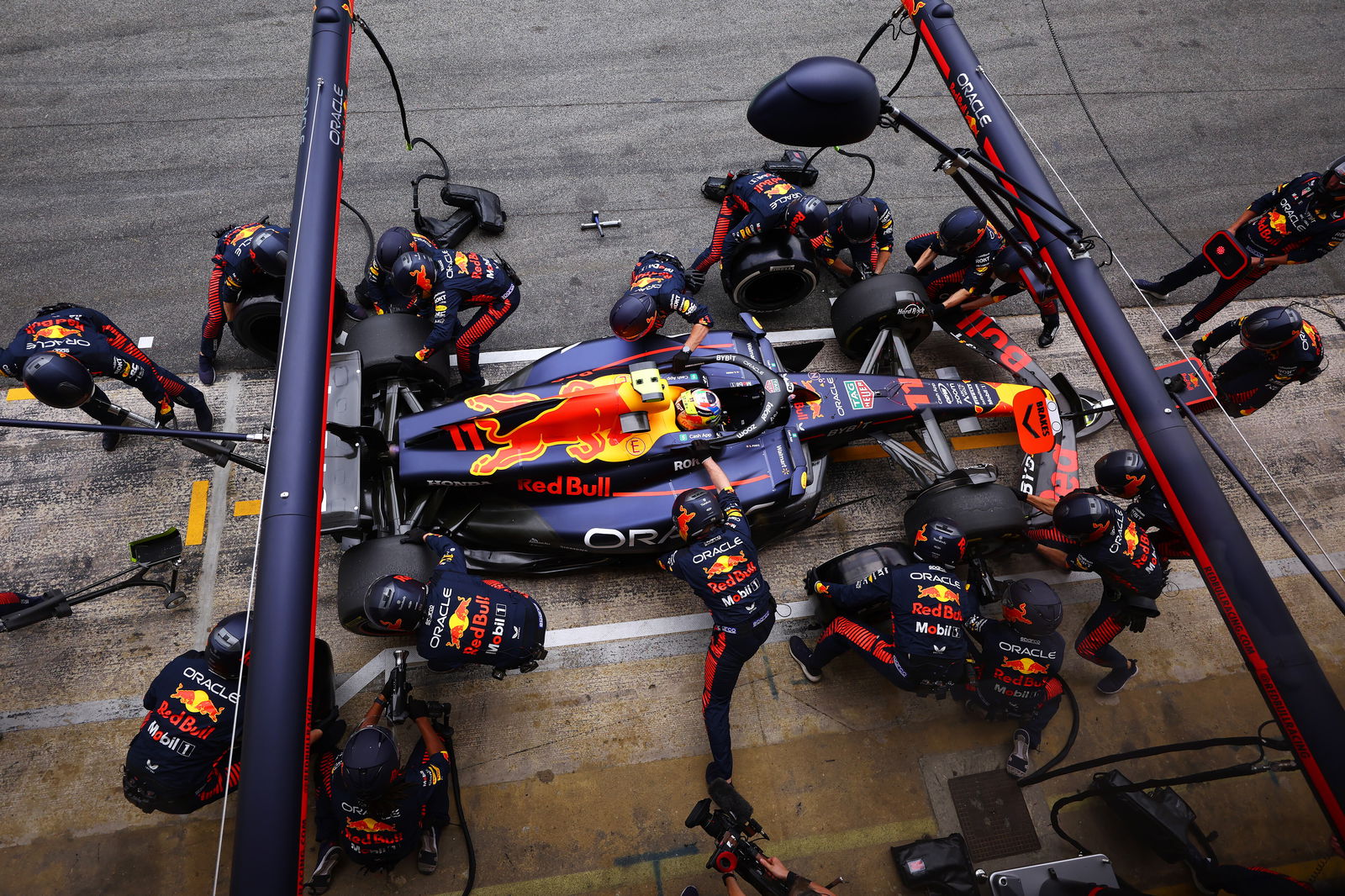
The steering wheels are very complicated with a considerable number of buttons, dials, thumb wheels, paddles and combinations that are used to adjust things like brake balance, differential settings, and engine modes, as well as a screen display for viewing information and data. Carbonfibre composite brake discs squeezed by conventional hydraulic calipers are used with the rear braking assisted by the ERS.
Tyres are supplied by Pirelli, with five dry-weather compounds available across the season. Three are available to use at any given race, depending on the circuit characteristics; Pirelli uses data from all the teams to decide which compounds to use where. There’s also an intermediate tyre for when the track surface gets a bit wet, and a wet-weather compound in case it’s really chucking it down.
Pit stops are mandatory during races and each driver needs to use at least two different dry compounds of tyre in a race. There’s no mid-race refuelling and as a result the pit stops have become blink-and-you’ll-miss-it fast – during the 2023 Qatar GP, McLaren managed to change all four tyres on Lando Norris’s car in just 1.80 seconds.
2025 will be the final year under the current regulations, with new regulations in 2026. We’ve explained them in more depth here, but the short version is this: the cars will still use 1.6-litre turbocharged V6 engines, but the balance between the combustion engine and electric motor will shift so that the engine’s producing around 536bhp and the electric component around 470bhp. The MGU-H is also being ditched, leaving the MGU-K to handle all the energy recuperation.
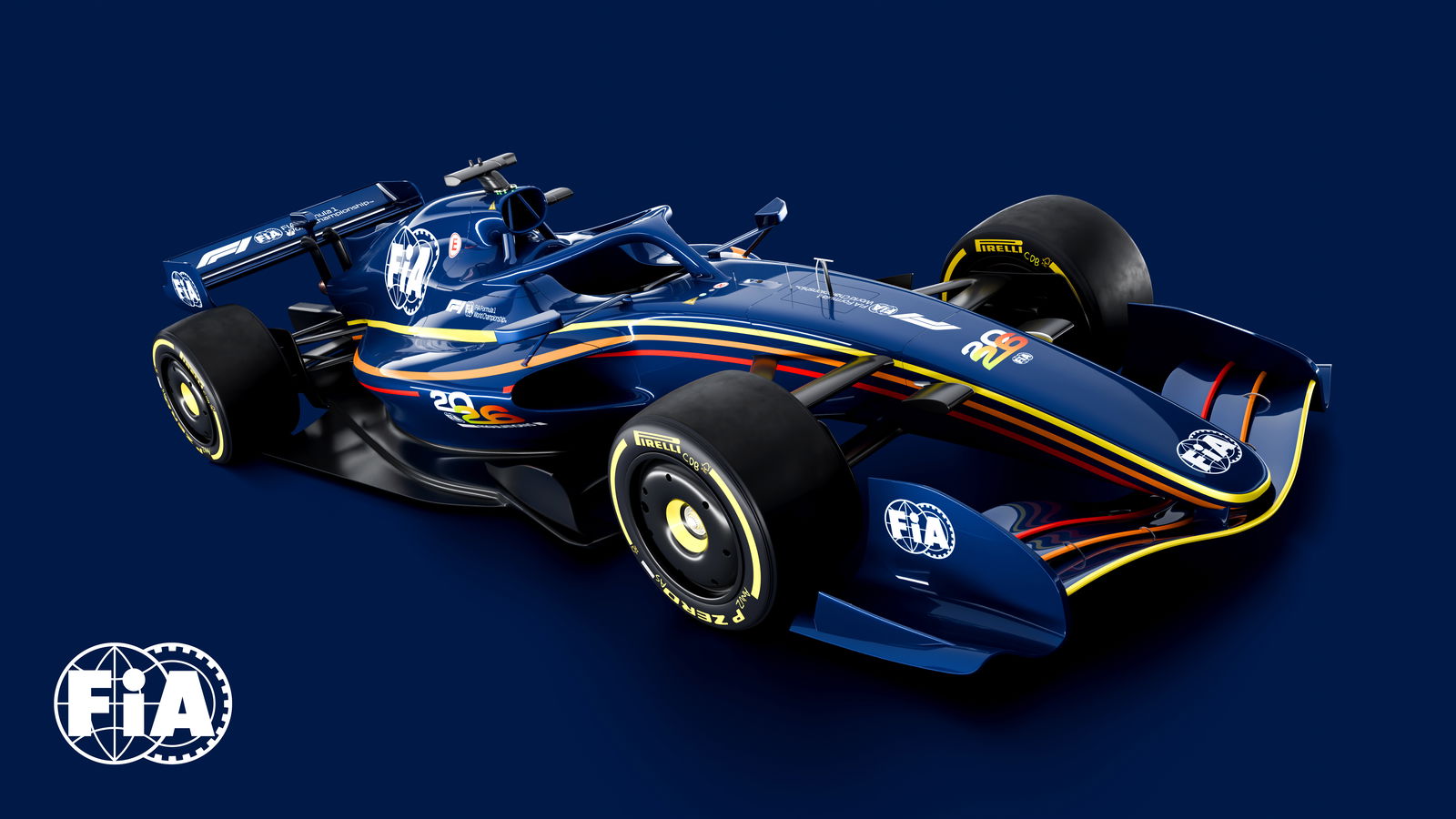
DRS will no longer be an overtaking aid only usable in certain places and within a certain gap of the car ahead. Instead, it’ll be freely available, and drivers will be able to switch between high- and low-downforce settings on the fly. Taking its place as a gap-conditional overtaking aid will be a manual override that’ll allow the car’s electric motor to produce its full complement of power plus a small additional boost.
Finally, the cars are set to get slightly smaller and lighter, which the FIA hopes will lead to closer racing.
2026 will also bring shakeups to the teams and engine suppliers. Cadillac will enter as an 11th team, initially with Ferrari power, and Audi will take over the Sauber outfit as a full factory team building its own engines. Aston Martin will acquire Honda power, and Ford will form a partnership with Red Bull Powertrains to supply Red Bull and Racing Bulls. Finally, Renault will end its engine programme, with its factory Alpine team taking on Mercedes power.
IndyCar

IndyCar is first and foremost a North American series, and while it’s previously visited venues as far afield as Brazil, Australia and Japan, 2025 will see it hold 16 races in the USA and one in Canada. While the calendar is shorter than F1’s, the variety of circuits visited is greater, with purpose-built road courses, street circuits (often much tighter and bumpier than their F1 equivalents), and oval courses ranging from one to 2.5 miles in length.
Probably more important to fans, teams and drivers than the series itself is the annual Indianapolis 500, a 500-mile race that takes place every May at the Indianapolis Motor Speedway. It’s from this race that the entire series gets its name, and it’s been held nearly every year since 1911.
Grid sizes have traditionally been a bit more fluid than in F1, although, for 2025, the series is introducing a charter system. This will guarantee 25 starting positions for 10 teams that entered the full 2024 season, with each team getting two or three guaranteed slots. Grid sizes will be limited to 27, with the remaining two spots to be competed over by non-chartered teams, including newcomer Prema. This system won’t be in place for the Indy 500, though, which sees a larger grid with several one-off entries.
Teammates often don’t share the same liveries, with sponsorship being tied to drivers rather than teams. Some drivers will even have different colour schemes from race to race.
Unlike F1, the IndyCar grid runs the same chassis and aerodynamic kit, with power coming from one of two engine manufacturers – Honda or Chevrolet. These 2.2-litre twin-turbocharged V6 engines produce between 550bhp and 700bhp depending on the amount of boost used and the type of circuit being raced on (generally speaking there’s a lower power figure on ovals for reasons of durability and safety).
The spec carbon fibre chassis is used by the entire grid, and has been since 2012, with some developments and modifications. It’s built by Italian constructor Dallara, IndyCar’s sole chassis supplier since 2009. It’s currently rumoured that a new chassis could arrive in 2027.
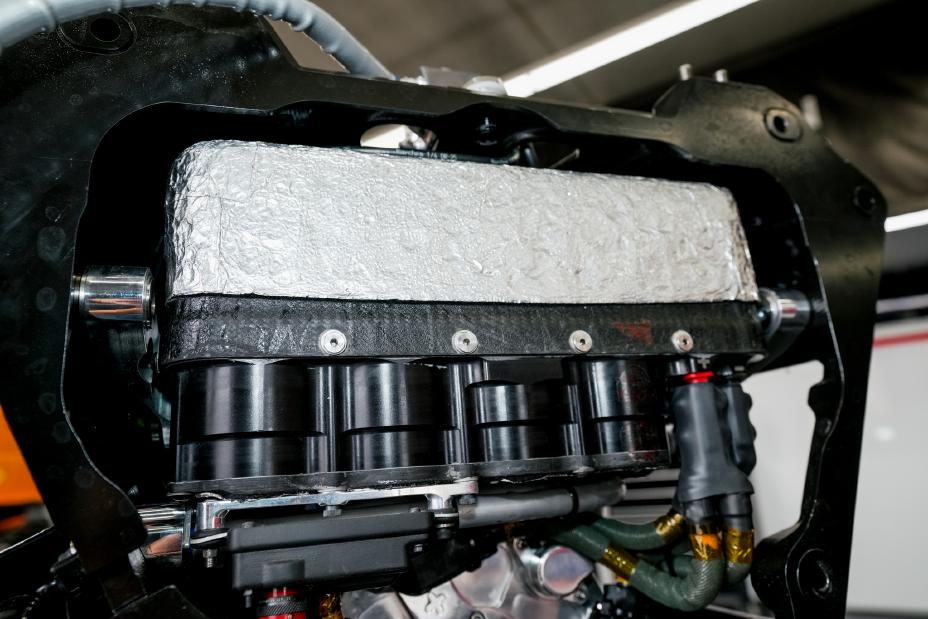
In July 2024 IndyCar introduced hybrid systems, which unlike F1's hybrids have been added on to the existing engines. Honda and Chevrolet worked together, and with third party suppliers, to develop the bolt-on technology. The system uses supercapacitors to store kinetic energy, attached to a motor generator unit (MGU) that harvests kinetic energy and sends that reclaimed power back to the wheels.
While the hybrid system adds an extra 105lbs (48kg) to each car, it also adds extra horsepower for IndyCar's push to pass system (more on that shortly). It also lets drivers restart the car if they stall – previously the cars needed external starters.
IndyCar had planned to introduce new 2.4-litre engines alongside the hybrid tech, but those plans were dropped at the end of 2022.
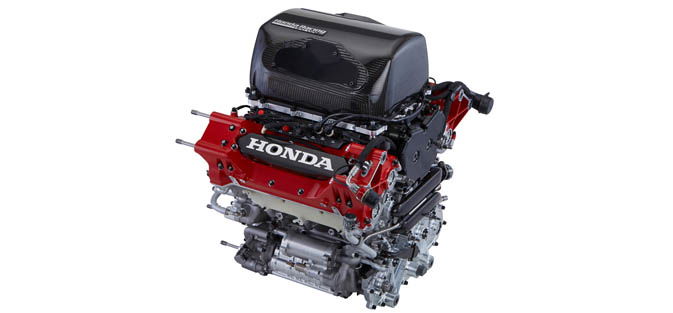
The gearboxes are Xtrac six-speed, semi-automatic paddle shifts with a reverse gear. Tyres are supplied by Firestone and, like F1, feature different dry-weather compounds. There are also wet tyres available for road and street courses, with no wet running at all allowed on oval circuits. Each driver must use two tyre compounds in every race.
Brake discs, pads and disc bells are all made by PFC, although teams can choose Brembo or Alcon master cylinders.
Just because the cars all have the same chassis and aero kits it doesn’t mean the cars are all identical. Teams are allowed to build and develop their own parts such as the brake ducts and certain suspension components, with the dampers being a particularly key area of potential improvement.
This is critical because the greater variety of tracks IndyCar races on means the car’s spec changes regularly. Power levels, aero kits, weight, suspension setup and ride height often differ from race to race.
Like F1, IndyCar has an overtaking aid - the push-to-pass system (although it's not avalable on ovals), where drivers can press a button on the steering wheel to get around 120bhp of extra power (up from 60bhp since the introduction of the hybrid tech). However, its usage is much less restricted than in F1. Drivers can use it to attack or defend, on any part of the circuit they want and regardless of the gap to other cars, for up to 15 or 20 seconds at a time depending on the track. The only limitation is on the overall allocation, which varies between circuits but is usually around 200 seconds.
Drivers also have to be wary of how much fuel they’re using because refuelling is a key strategy element in IndyCar. Drivers will usually have to make two or three stops for fuel during a race and, depending on the frequency and timing of a caution period, fuel-saving is a key weapon in the driver’s armoury. Because of the need to refuel and a limit on the number of people allowed to be involved in a stop, a normal pit stop in IndyCar can range anywhere from six to 10 seconds.
As in F1, IndyCar also recently introduced cockpit safety measures, although the American series decided against the halo and instead introduced the Red Bull-developed aeroscreen in 2020. This fighter jet-style screen, made from polycarbonate and titanium, is designed to deflect debris away from the driver’s head at speed. The design has been slightly tweaked since its introduction, with upgrades including adjustments to improve visibility in the wet and reduce misting inside the screen.
F1 vs IndyCar performance
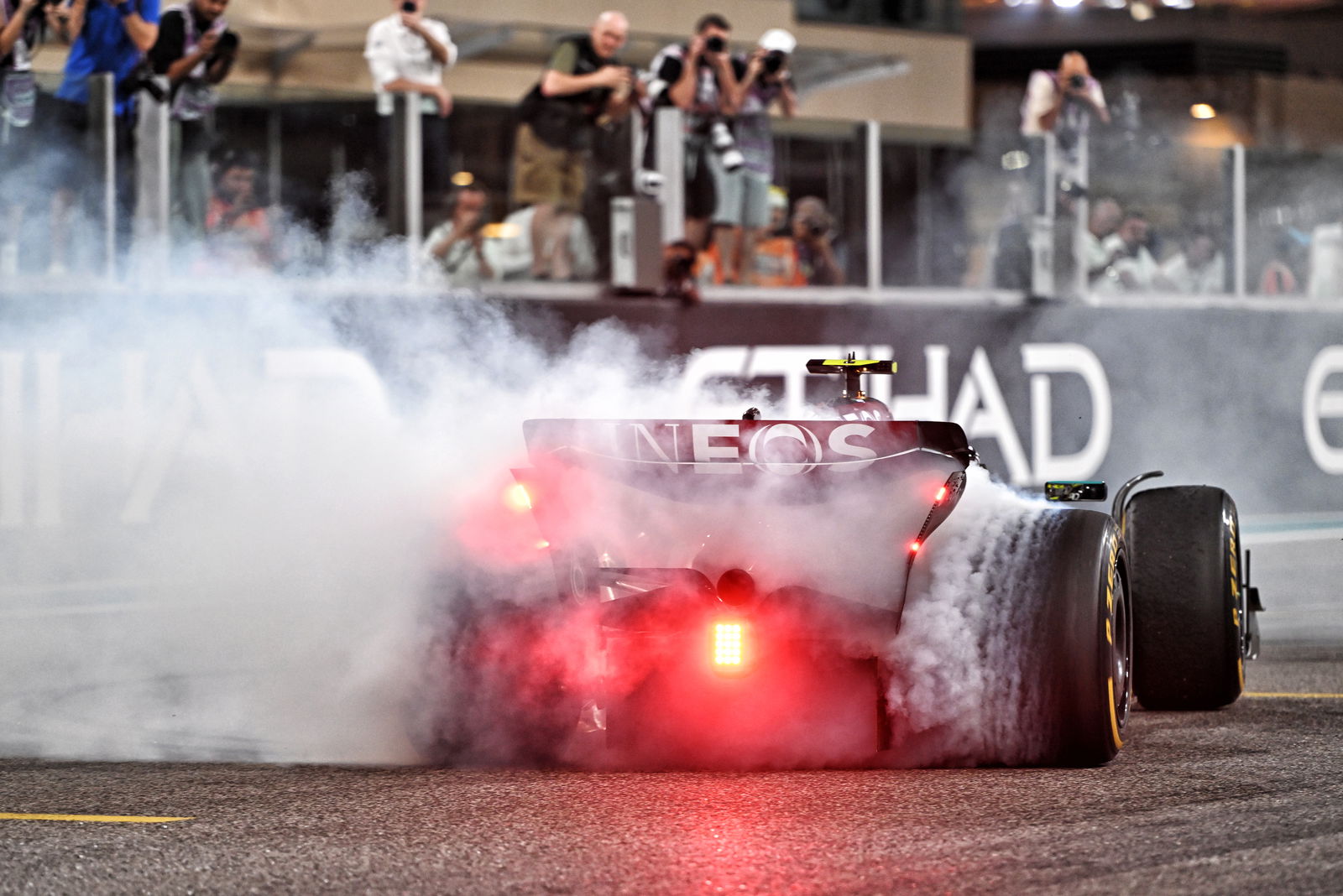
Although an IndyCar is around 40cm shorter than an F1 car and significantly lighter, the simpler aero means they’re much slower around a typical track. The only circuit visited by both series in recent years is the Circuit of the Americas in Texas. Here, the IndyCar race lap record is Colton Herta’s 1:48.895 in 2019; while the fastest race lap in F1 is 1:36.169, set by Charles Leclerc the same year.
On the other hand, F1 cars' top speeds are limited by the circuits and draggy aero, meaning the highest speed you’ll see in a season these days is generally around 220mph with the assistance of slipstream and DRS. Meanwhile an IndyCar in superspeedway setup will nudge 240mph in clean air, despite having significantly less power than an F1 car.
Another key difference between the two is that F1 cars have power steering, whereas IndyCars don’t, making for a more physical driving experience – something that former F1 drivers making the switch to IndyCar have been quick to comment on.

Although they may look similar, IndyCars and F1 cars are very different beasts, designed with differing priorities in mind. IndyCar races on a wider range of tracks and the cars can change significantly depending on the circuit. F1 is much more standardised race-by-race, but the innovation and development of the cars create more diversity among the teams and, around a typical race track, makes them the fastest racing cars in the world. Both series produce phenomenal racing and at the end of the day, that’s what matters the most.


Comments
Why hasnt anyone ever did a f1 vs indycar track test? (Honda since you make engines for both im looking at you)
Great article
Really informative
I wonder if bernie makes a race event between F1 vs Indy car who would win?
Actually, fastest speed recorded in F1 2015 was Maldonado at Mexico doing 366 km/h.
Damn I should start watching IndyCar
how much difference is there in downforce and L/D ratio?
Information I never knew I needed to know. Now I know.
Indy500 have 33 cars, not 34
and.. GO MONTOYAAA!!!!
Why not a comparative sheet and an actual duel?
Top gear actually did a really interesting article this month on f1 vs world endurance in their magazine.
Pagination